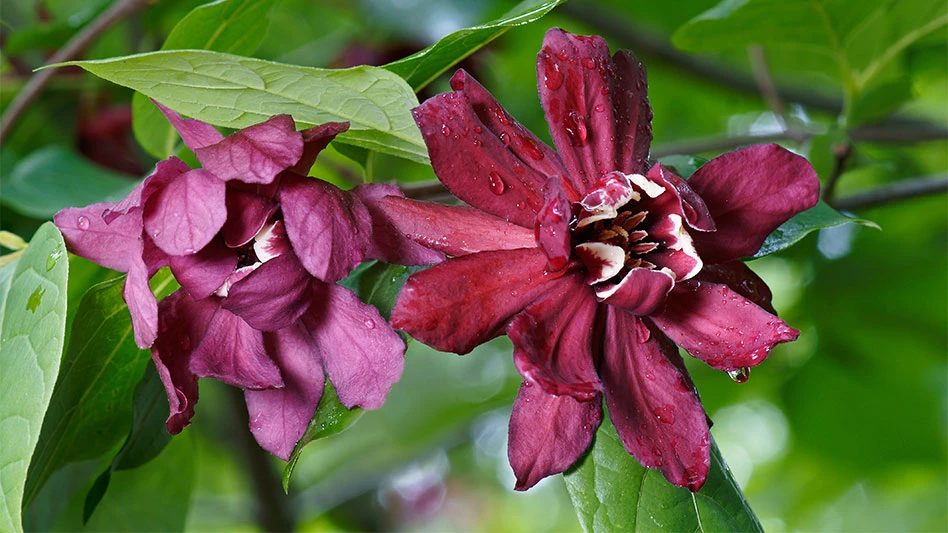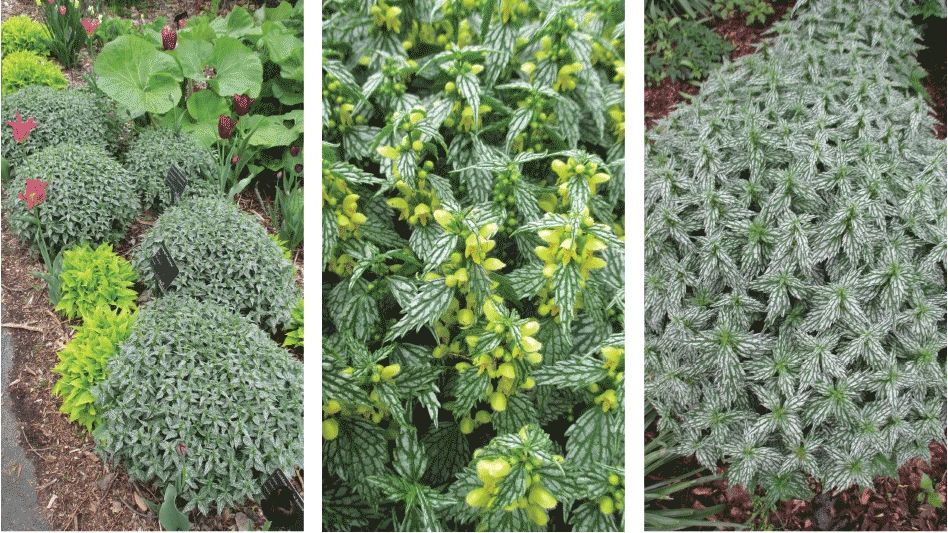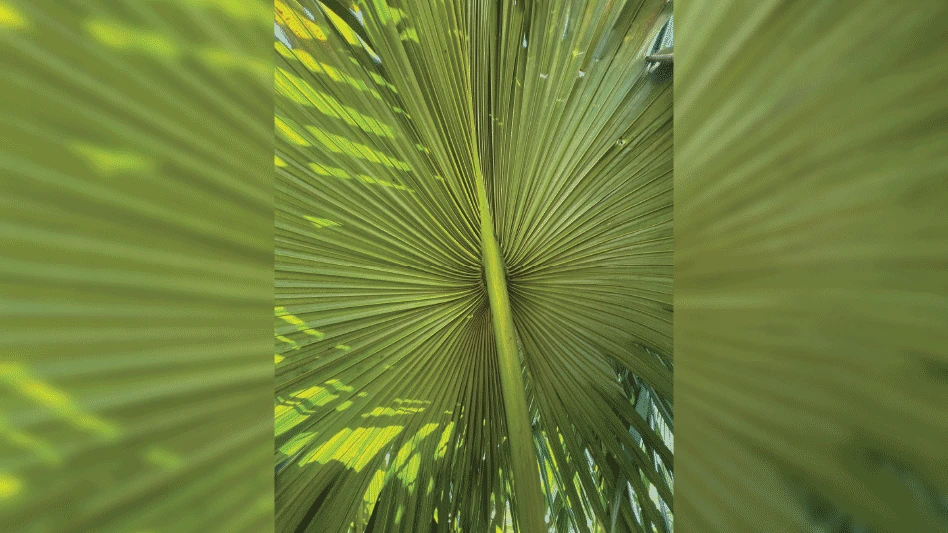Want a plant that is unusual, fun or just plain useful? Do you need just the right plant for dry or wet shade? How about an evergreen groundcover or lawn substitute? Want an unusual accent plant or a native for wetland and woodland restorations? Look beyond the ordinary. Look for a sedge.
Plants in the genus Carex bear a remarkable resemblance to grasses and have often been referred to as “sedge grass.” Nevertheless, they’re part of their own family (Cyperaceae) with unique characteristics, such as blades that are triangular in cross-section. It’s important to distinguish sedges from true grasses because you can get into trouble if you treat them like grasses. Here, we introduce you to some broad categories of sedges, give a few examples and then explain how to treat them right.
There are more than 1,000 species of Carex, making it difficult to generalize. If anything marks the genus, it’s the diversity in color, texture and cultural adaptation. However, there are some groups that we find useful in talking about sedges. They correspond to three broad, geographical categories: Asian, New Zealand and North American natives.
Asian natives
Commercially available sedges that originated in Asia are often variegated and well-adapted to shade. Although only a few sedges are grown for their flowering characteristics, the blooms on Asian species are often more prominent than their relatives from other parts of the world. These vibrant, shade-loving species lend rich brightness and depth to shady spots. They appeal to anyone who is tired of the traditional and wants to expand beyond the familiar.
Almost all are well-suited for container plantings. The variegated selections make a powerful statement in mixed containers but can carry off a great show as a single. In milder climates, many are evergreen, making them a great choice for winter plantings. C. oshimensis ‘Evergold’ remains one of the most popular and brightest of the gold-variegated selections. C. morrowii ‘Silk Tassel’ offers very fine, narrow variegated foliage and is remarkably tough in the landscape. It has sailed through drought conditions in our dry shade garden here at the nursery. New cultivars of C. morrowii, such as ‘Ice Ballet,’ give Northern gardeners an alternative to the same old liriope. ‘Ice Ballet’ sports half-inch-wide blades with wide, creamy margins that brighten up shade. It can also handle sun in cooler climates or with increased moisture, making it a versatile ground cover and specimen plant. Another great selection, C. dolichostachya ‘Kaga Nishiki,’ carries the common name Gold Fountains -- a literal translation of its cultivar name, and a perfect description of its habit and foliage.
New Zealand natives
The “other” land down under brings us New Zealand sedges. These sun sedges seem determined to add zest wherever planted. The bronze sedges in this group are distinguished by foliage color that ranges from toffees and caramels to deep red-bronze (e.g., C. comans ‘Bronze,’ C. buchananii Red Rooster, C. flagellifera Toffee Twist). For the uninitiated, these plants may be mistaken for dead because of their color. However, that tends to happen when they’re planted in situations where their color gets lost (such as next to dark mulch). Try using them in dense mixed plantings, in containers, or next to stone hardscape where their deep, rich colors contrast with the surroundings. Other New Zealand sedges burn with fiery orange tips (C. testacea Prairie Fire) or charm with curlicue tips (C. buchananii f. viridis ‘Green Twist’). C. comans Amazon Mist has narrow, green leaves with dusty-white undersides, giving it a two-toned punch.
The attraction of the North American native sedges lies in their diversity. There is bound to be one that fits almost any set of cultural conditions you have. Many are not commercially available, but their popularity is increasing, and demand should push many into the marketplace. Here are some favorites at Hoffman Nursery:
C. plantaginea boasts the charming moniker of seersucker sedge. Its puckered leaves and tufting habit blend beautifully in woodland settings and mixed plantings. Native to eastern North America, it grows in rich, moist forests, on slopes along streams or along edges of moist depressions, and southward in mountain gorges. On some of our hikes, we’ve seen it growing naturally in the mountains of Western North Carolina and East Tennessee. In Joyce Kilmer Memorial Forest, one of the few remaining tracts of virgin hardwood in the Appalachians, huge expanses of Seersucker Sedge thrive amongst the towering hardwoods.
We often group C. pensylvanica and C. appalachica together because of their similarities. Both grow naturally in forested areas with sandy or rocky soils, with C. pensylvanica also found in more open areas such as savannahs or mountain balds. These sedges are native to eastern North America, with C. pensylvanica having a broader range that extends westward past the Mississippi River. Both have graceful, fine textured foliage, are medium green in color, and can substitute for traditional turf grass in partially shaded areas. They cannot take foot traffic, but will create a lovely, low, no-mow wash of green. C. appalachica forms dense tufts that can be planted 12- to 18-inch on center for continuous coverage. C. pensylvanica slowly spreads via rhizomes to create a fine, green carpet. Both can handle relatively dry conditions once established, but appreciate having moist, well drained soil if possible. They are primarily shade sedges, but in cooler climates or with moister conditions, they will tolerate partial sun. Pennsylvania sedge graces our dry shade garden and has weathered several droughty summers.
C. grayi (Gray’s sedge) represents a rare exception to the usual insignificance of sedge blooms. The star-shaped seed heads of Gray’s sedge appear in late spring and take blooming beyond interesting. Invariably, someone asks, “What IS that plant?” We love Gray’s sedge because it adds a bit of the exotic to mixed containers and moist areas. This sedge grows naturally in deciduous forests in moist, well-drained or wet soils and in river bottoms. Although a moisture lover, it cannot take standing water for long periods.
Treat ‘em right
Sedges are more challenging to grow than grasses because they tend to be more sensitive to cultural conditions such as soil moisture, salt concentrations, and temperature fluctuations. They’re slower growing than grasses, taking longer to finish when containerized and to recover from being cut back. Unlike grasses, which can take unfavorable conditions for a while, sedges will quickly show damage when over fertilized or over watered.
With container production, it’s critical to monitor nutrient and moisture levels carefully. For overwintering, it’s best to keep them on the dry side to avoid rot. Try using a slow-release, low-rate fertilizer for more precise control over salt concentrations. At times, we’ve added extra perlite to our media to increase drainage and improve aeration.
Of the sedges, the Asian species are probably the most sensitive to water. In container production, they may develop fungal problems such as Rhizoctonia and crown rot if overwatered. Most grow best with moist conditions in the landscape, but vary in their ability to handle consistently dry conditions.
In container production, New Zealand sedges grow best when potted up during cooler temperatures in spring and fall. They take more sun than the Asian sedges, but share their love of well-drained soil. Keep them slightly moist to dry; over watering can cause disease problems and discolored foliage. In the landscape, the New Zealand sedges thrive in sun if they have adequate moisture. Some will tolerate drought once established.
Of course, these descriptions are general, and aren’t appropriate for all sedges. If you’re growing or planting a sedge, just be aware that it’s likely to have different requirements from true grasses. This critical point can help you avoid costly mistakes in growing, selecting, and managing sedges.
.jpg)
A) Sedges have a multitude of uses. B) C. oshimensis ‘Evergold’. C) C. buchananii f. viridis.
D) C. flagellifera Toffee Twist. E) Seed heads of Carex grayi. F) Carex appalachica.
For more: Shannon Currey & John Hoffmann, Hoffman Nursery, Rougemont, N.C.; www.hoffmannursery.com
WANT MORE?
Enter your email to receive our newsletters.

Explore the July 2010 Issue
Check out more from this issue and find your next story to read.
Latest from Nursery Management
- American Floral Endowment establishes Herman Meinders Memorial Tribute
- These companies are utilizing plastic alternatives to reduce horticultural waste
- NewGen Boxwood added to Proven Winners ColorChoice line
- Terra Nova releases new echinacea variety, 'Fringe Festival'
- American Horticultural Society names winners of 2025 AHS Book Awards
- Nufarm announces unified brand
- American Horticultural Society announces winners of 2025 Great American Gardeners Awards
- Shifting the urban environment






